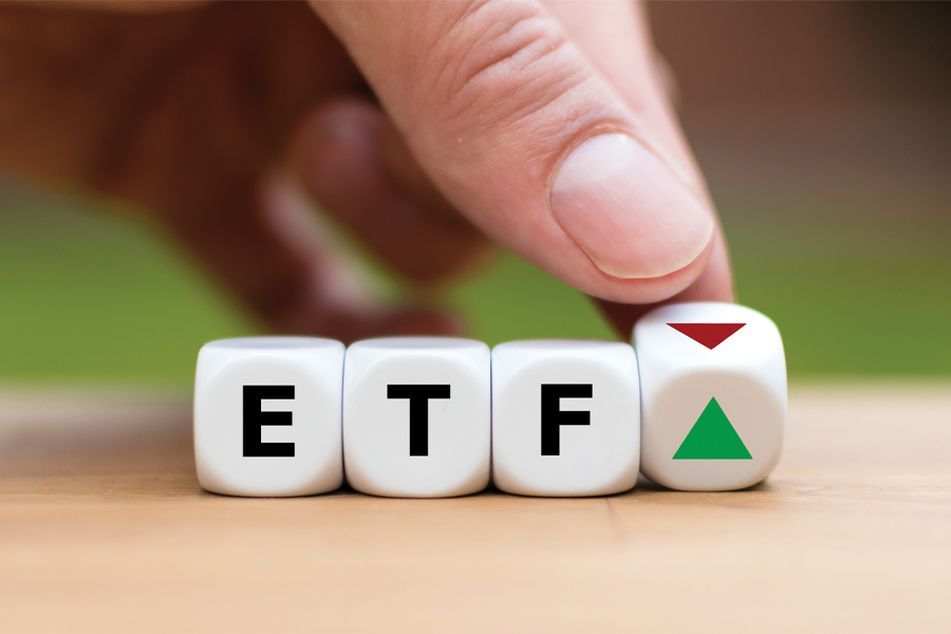Latest levered ETFs offer triple market performance — with a catch

The flipside of the new Innovator Capital Management products is the performance is capped and they can be more expensive than some of the cheaper indexed options.
In the latest example of Innovator Capital Management living up to its name, the ETF manager has rolled out a suite of levered funds that offer two and three times the performance of a couple of popular indexes.
But before jumping headlong into a levered-up version of the S&P 500 Index and the Nasdaq, investors and financial advisers will need to consider where they expect markets to head over the next quarter or year because the upside of these ETFs is capped.
There are six ETFs in the new suite, and each comes with a performance cap and duration. The Innovator U.S. Equity Accelerated ETF (XDAP), for example, offers two times the performance of the S&P 500 if held for the full year starting April 1, but the total performance is capped at 17.16%.
In other words, if the S&P gains 5% over the period, investors in this fund will gain 10%. And if the S&P gains 20% over the period, investors in this fund will gain 17.16%.
As Innovator chief executive Bruce Bond puts it, “All the way up to 17% you’re going to outperform the market.”
“This is for people who want to assure certain levels of performance within the equity portion of a portfolio,” he added.
While it might seem simple, once you get beyond handicapping how well the broad markets will perform, there are a few factors to consider. For starters these ETFs, similar to buffered products that offer downside protection with an upside cap, are considerably more expensive than a simple index fund.
The Innovator ETF fees are 79 basis points, which is still cheap in the fund world, but pricey when compared to 9 basis points for SPDR S&P 500 ETF (SPY).
The other important point is that these ETFs offer ramped up performance by using derivatives to track the benchmarks, which means the full benefit can only be achieved if an investor holds the fund for the full term.
“This is taking a lower-risk approach to investing and amplifying the upside potential,” said Todd Rosenbluth, director of mutual fund and ETF research at CFRA.
The new Innovator ETFs fit the Securities and Exchange Commission’s limits on keeping the total “value at risk” below 200%, which is part of the new ETF rules.
“The SEC had for a while kept ETFs that used leverage in somewhat of a penalty box, and there weren’t clear guidelines,” Rosenbluth said. “But within the past year the SEC came out with new rules and guidelines, and these funds appear to be taking advantage of the open door.”
While the new Innovator funds enhance upside performance, the downside on five of the six ETFs is equal to the market.
The one exception is Innovator U.S. Equity Accelerated 9 Buffer (XBAP), which offers double the performance of the S&P 500 up to 10.2%, but also absorbs the first 9% of losses. For instance, if the S&P is down 9% over the full 12-month period, the investor will not suffer any losses. And if the S&P is down 10%, the investor will suffer a 1% loss.
For those investors not interested in committing to a full year, Innovator has ETFs tracking the S&P and Nasdaq with quarterly terms. The Innovator U.S. Equity Acerated (XDSQ) offers double the performance of the S&P up to 6.7% over the three-month period starting April 1. The Innovator Growth Accelerated (XDQQ) offers two times the performance of the Nasdaq up to 9.5% over the three-period starting April 1.
The other two funds in the suite include the Innovator U.S. Equity Accelerated Plus (XTAP), which offers three times the performance of the S&P after 12 months up to 16.2%, and the Innovator Growth Accelerated Plus (QTAP), which offers three times the performance of the Nasdaq after 12 months up to 21.3%.
The performance caps of all the funds reset at the end of each term based on the costs of the underlying derivatives.
Learn more about reprints and licensing for this article.








